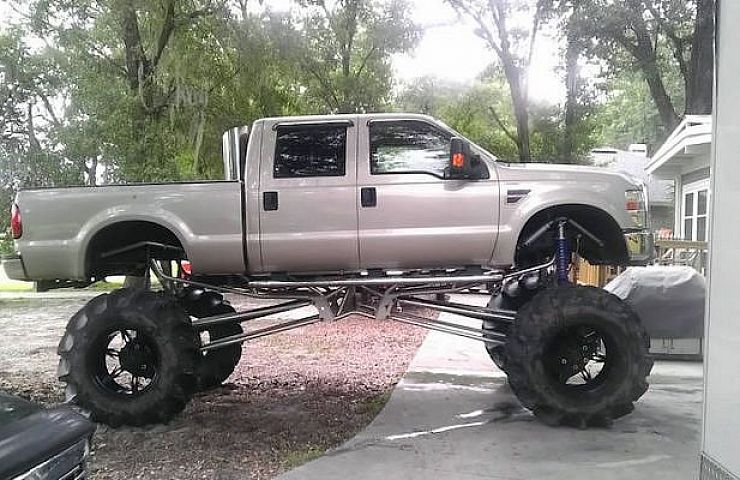Modern vehicle suspensions come in a variety of configurations. Today the most popular type—especially for performance vehicles—is called a “coilover.” The term is short for “coil over shocks” (or coiled springs that go over a shock).
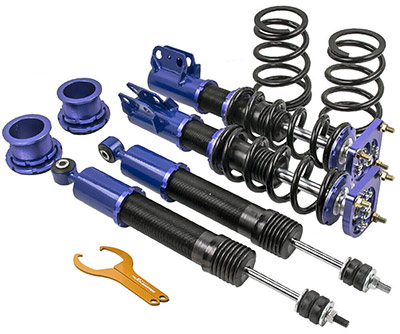
Coilovers provide a way to adjust the suspension in various ways.
In other words, this type of suspension component connects the car’s body to the wheels. Here’s the key: Car coilovers can adjust spring height, shock firmness, or both.
A coilover consists of a damper (similar to a shock absorber) and a coiled spring encircling the damper. The spring prevents the car from bottoming out and reduces a car’s body roll when cornering. In addition, the damper helps control how quickly the vehicle moves up and down.
Types of Adjustable Car Coilover Shocks
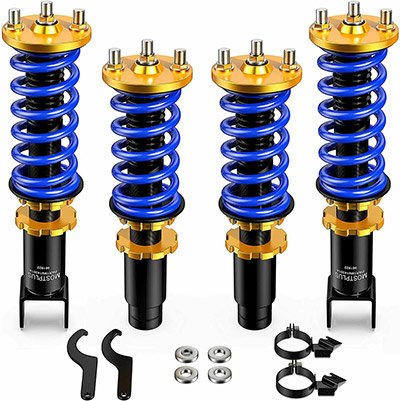
Complex coilovers allow for precise adjustments.
Adjustable car coilovers can adjust your vehicle’s ride height or the stiffness of the shock absorber without disassembling or removing the strut that’s already installed.
Slip-over lowering coilovers are the least expensive way to adjust your vehicle’s ride height. Slip-overs work with your existing stock struts.
Ride-height adjustable coilovers are also easy to install. They constitute a complete assembly. An adjustable lower-spring holder compresses the strut’s coil spring to lower the ride height of your car or truck.
Shock-adjustable coilovers are the next step up to ride-height coilovers, adding adjustable firmness. This allows you to tweak the ride height and shock firmness. Set them high and soft for street use—or low and stiff for the track or competition. There are a wide variety of these types of car coilovers. Some have an outboard shock absorber oil reservoir for adjustability and performance during competitions.
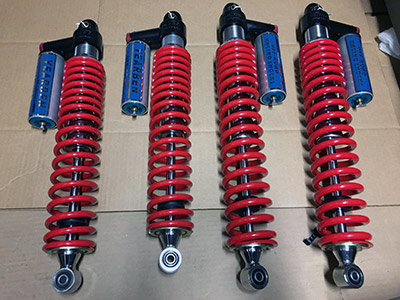
Off-road coilovers
Off-Road reservoir coilovers have extra-long shock travel, extreme ride height adjustment, and multiple shock absorber firmness adjustments. So if extreme off-roading is your goal, reservoir coilovers get the nod.
Making Car Coilover Adjustments
The beauty of coilovers is the vast adjustments available for tuning the car’s ride. Usually, you can easily make these adjustments without jacking up the car or removing wheels. So if you take the vehicle to the strip or track, you can make adjustments quickly based on diverse road conditions.
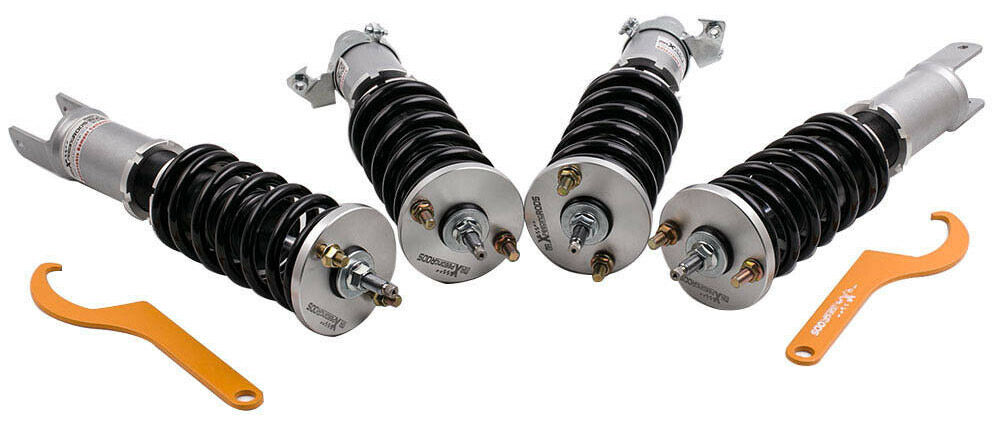
A spanner wrench adjusts the spring seat.
Most car coilovers allow you to change the ride height by adjusting the spring height. A threaded seat can be moved up or down as desired. This also can impact the preload of that spring.
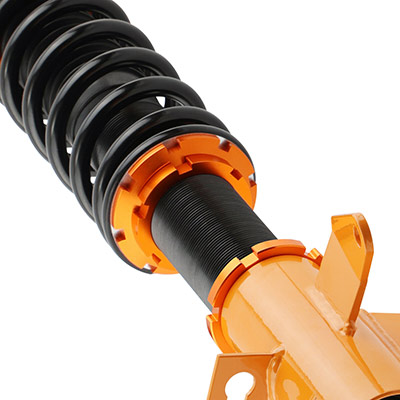
The threaded collar moves up and down to adjust the spring height.
You can adjust the dampers as well. One-way dampers adjust both the rebound and compression characteristics of the damper simultaneously. Two-way or dual-adjustable dampers allow for separate adjustments for rebound and compression. Some manufacturers allow for even more road-specific adjustments, but this requires more precise engineering and design.
Fine-Tune Your Ride
A good starting point is to install the coilover exactly as provided by the manufacturer. Then make minor incremental adjustments to see its impact on the ride. For example, you might tweak for better control of wheel hop or body roll. For consistency, take careful notes about speed and road type. Then slowly but surely dial in the desired ride quality.

